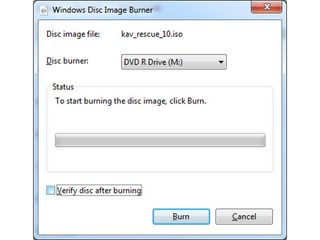
- KASPERSKY RESCUE DISK USB WONT BOOT INSTALL
- KASPERSKY RESCUE DISK USB WONT BOOT DRIVERS
- KASPERSKY RESCUE DISK USB WONT BOOT UPDATE
- KASPERSKY RESCUE DISK USB WONT BOOT PORTABLE
KASPERSKY RESCUE DISK USB WONT BOOT PORTABLE
Though it isn’t a Web app, it is portable, so you can download HouseCall on another computer and copy it to a flash drive, thereby creating a portable PC virus scanner. You might also try Trend Micro’s HouseCall.

The ESET Online Scanner runs in your browser and does a thorough job of rooting out malware from your PC. Before you start the scan, click Advanced settings and enable as many extra levels of scrutiny as you can, including scanning file archives and browser data. For best results I recommend using the ESET Online Scanner, a Web-based virus detection app that is always up-to-date and runs off a remote server. You’ll have to accept a browser add-in, but the scanner should remove it when it’s done. Once in Safe Mode, open Internet Explorer (using other browsers in Safe Mode is often problematic) and run a reputable online virus scanner such as Bitdefender. The with Networking part is important-you’re going to need Internet access to solve your virus problem. When you reach that menu, select Safe Mode with Networking from the list of boot options. Use the Windows boot menu to access Safe Mode.

The timing is tricky, so it’s best to mash F8 repeatedly from the moment the motherboard manufacturer’s logo appears onscreen until you get the boot menu. To enter Safe Mode, boot your computer and press the F8 function key before Windows starts loading. It doesn’t load most startup applications and-most likely-it won’t load the malware that’s infesting your PC.
KASPERSKY RESCUE DISK USB WONT BOOT DRIVERS
Windows has a Safe Mode that boots a minimal version of the operating system, with generic drivers and nothing else. Use a lightweight scanner inside Safe Mode Linux is your best bet, but before you jump to that option, try booting into Windows Safe Mode to see if you can outflank your virus infestation there. It must be capable of detecting and removing malware from your PC, and you need to run it in an environment where the malware can’t load first. You need a fresh malware scanner-one that’s not already installed on your computer. More often than not it’s a rogue program, fear-mongering malware that tries to scare you into giving up your private info by issuing doomsday warnings of imminent hard drive failure, catastrophic viral infection, or worse. Never fork over your credit card information or other personal data to a program or website that tries to warn you that your PC is about to die. If a program you don’t recognize suddenly pops up and starts displaying dire warnings and asks you to run an executable file or asks for your credit card number, your PC is definitely infected with some nasty malware.
KASPERSKY RESCUE DISK USB WONT BOOT INSTALL
AVG Fake warnings like this one try to scare you into running a file to ‘remove malware’ (read: install malware) or giving up your credit card information to pay for bogus antivirus software. If your antivirus program suddenly stops loading, that’s a huge red flag. If your PC suddenly won’t load utilities that might help you manually remove malware-such as msconfig or regedit-be suspicious. Truly insidious malware will preemptively block you from trying to remove it. That said, you’d be surprised how often a piece of malware gives itself away with a line of strange characters or symbols where the process description should be. Of course, this is only general guidance there’s nothing to stop a piece of malware from masquerading as a legitimate process by sporting an inoffensive description.
KASPERSKY RESCUE DISK USB WONT BOOT UPDATE
The odd-looking “wuauclt” process is fine, for example, because it belongs to Microsoft (it’s actually part of the Windows Update service, as you can tell from the description.) Open the Processes tab, and check for any strange or unknown applications running in the background-especially those with nonsensical names and no recognizable authority listed in the description.

But before you decide that a virus must be responsible, take a moment to launch the Windows Task Manager (right-click the Windows taskbar, and select Task Manager from the pop-up menu). If your PC is unusually slow, or if it seems to do a lot of things on its own that you haven’t asked it to do, you have reason to be suspicious.


 0 kommentar(er)
0 kommentar(er)
